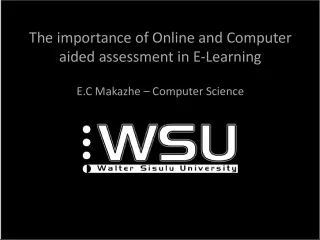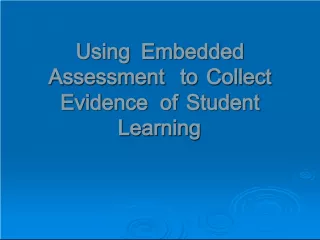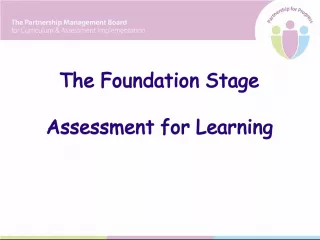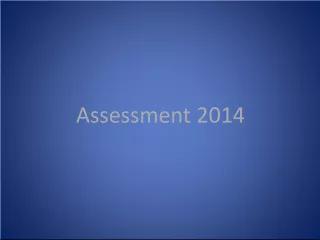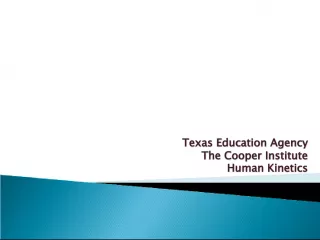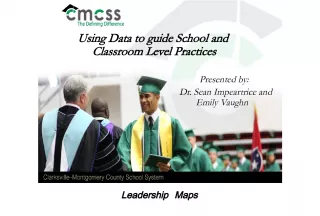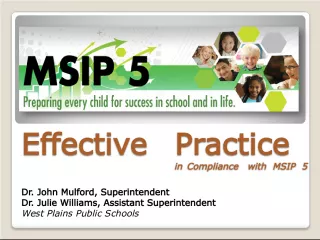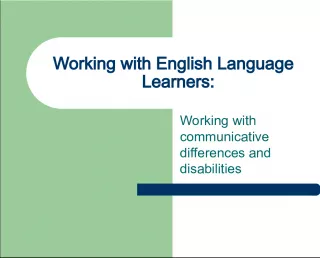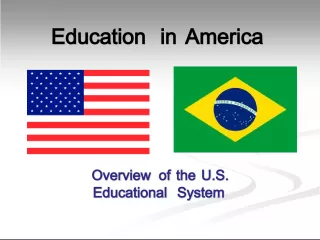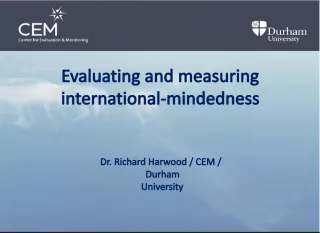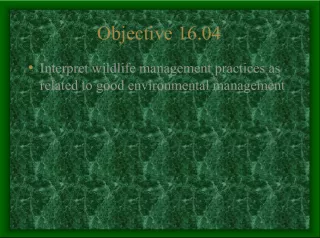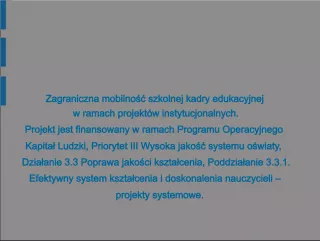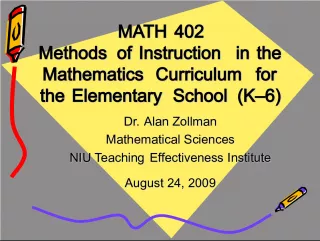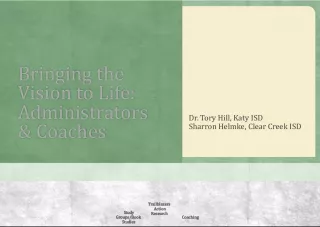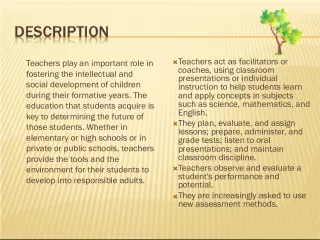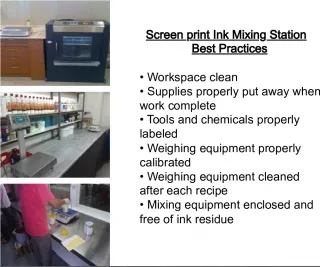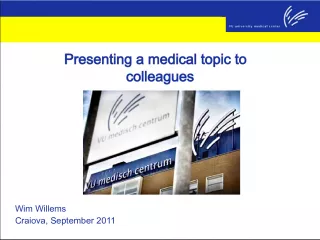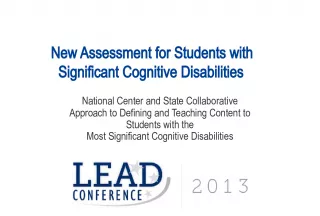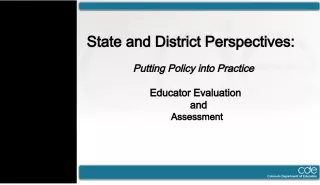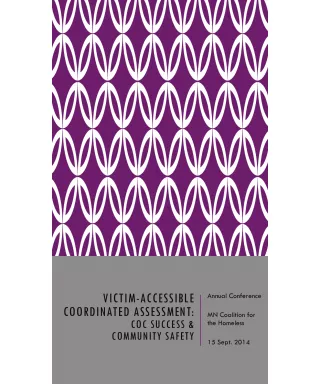Best Practices for Effective Assessment in Education


Learn about the benefits and importance of assessment in education and how it can be used to support student learning. Discover the various methods of assessment and how to use teacher judgements to effectively evaluate student achievement.
- Uploaded on | 3 Views
-
 melbawhite
melbawhite
About Best Practices for Effective Assessment in Education
PowerPoint presentation about 'Best Practices for Effective Assessment in Education'. This presentation describes the topic on Learn about the benefits and importance of assessment in education and how it can be used to support student learning. Discover the various methods of assessment and how to use teacher judgements to effectively evaluate student achievement.. The key topics included in this slideshow are Assessment, Student Learning, Teacher Judgements, Teaching Activities, Progress Monitoring,. Download this presentation absolutely free.
Presentation Transcript
1. Assessment Assessment should be an integral part of a unit of work and should support student learning. Assessment is the process of identifying, gathering and interpreting information about students learning. The central purpose of assessment is to provide information on student achievement and progress and set direction for ongoing teaching and learning.
2. Teachers judgements about student achievement can be supported by samples or evidence of students work. Teachers collect and record information that will enable them to: judge achievement of outcomes appropriate for the stage of learning plan further teaching and learning activities monitor student progress report achievement to students and parents.
3. S yllabuses use the terms : Assessment for learning Assessment of learning
4. Assessment for learning , is ongoing and acknowledges that assessment should occur as an integral part of teaching and learning and that the information gained from assessment activities can be used to shape the teaching and learning process. It provides feedback that helps students to understand and plan the next steps in learning.
5. Assessment of learning is assessment for accountability purposes, to determine a student's level of performance at the conclusion of a unit, year or stage. The information gained from this kind of assessment is often used in reporting. These professional judgements about student achievement are made at key points in the learning cycle e.g. at the end of a semester for reporting to parents.
6. Quality assessment: provides opportunities for students to demonstrate what they know and can do is inclusive of all learners is fair and valid has explicit quality criteria.
7. Assessment expectations Schools develop assessment policies which: provide opportunities for students to demonstrate achievement of syllabus outcomes use valid and reliable assessment strategies have assessment processes which are time efficient and manageable.
8. Standards Standards are derived from: syllabus outcomes and content showing what is to be learnt descriptions of levels of achievement of that learning .
9. Key questions What do I want my students to show me they know and/or can do? Is the type of marking suited to the type of task and the criteria I have in mind? Are the marking guidelines appropriate to the task instructions? Will the marking guidelines indicate to my students how they can achieve the marks?
10. Evidence of learning Methods of gathering evidence of learning include: informal observation by the teacher questioning peer evaluation self evaluation structured assessment activities.
11. Criteria for assessing learning should be communicated to students with the activity are clearly expressed in terms of the knowledge, understanding and skills required for the activity relate to the syllabus outcomes relate to the guidelines for marking are sometimes referred to as assessment rubrics.
12. Feedback to students is integral to the teaching and learning process will let students know how well their knowledge, understanding and skills are developing in relation to the outcomes enables students to recognise their strengths and areas for improvement allows students to plan the next steps in their learning.
13. The process of recording evidence for assessment needs to be manageable and allow information to be recorded quickly and easily should emphasise quality rather than quantity of evidence should reflect the reporting processes of the school can be both formal and informal.
14. Ways of recording assessment may include: comments grades marks checklists against assessment criteria rating scales observation grids notes from interviews graphs.
15. Terminology Outcomes Explicit statements of the knowledge, skills and understanding expected to be learnt by students. Criteria Descriptive statements that teachers will use to make judgements about the marks to be awarded for different levels of performance.
16. Rubric General criteria at the beginning of a section that will be taken into account in marking work. Marking guidelines C riteria for making judgements about the different levels of student performance and the marks to be awarded.
17. Marking scheme may be identical to the marking guidelines OR may elaborate on the marking guidelines in the light of student responses. Work samples provide student responses that illustrate particular outcomes and an indication of levels of student performance.
18. Sample Assessment Activity: Writing in [Languages] Students in Stage 3 have been studying a unit of work on eating and drinking. They have participated in activities, learned associated vocabulary and have compared their eating habits with those of [ Language] -speaking communities Students conduct a class survey about food and drink preferences, in order to design an appropriate menu for a two-day school Language camp. Working in pairs, students write a survey in Language for the other class members to complete. It could include questions about what is eaten for breakfast, lunch and dinner, and which food is eaten as snacks. Students might also like to gather information about how often they eat and drink certain items. Acknowledgement: Board of Studies. Advice on Programming and Assessment for stage 4 and 5 (2004)
19. Outcomes A student: 3.UL.4 writes texts to present key points of information in [Language] 3.MLC.1 recognises the importance of context in language use 3.MLC.2 identifies patterns and features of [Language] by making comparisons between languages 3.MBC.2 demonstrates understanding of significant cultural values and practices in [Language-speaking] communities.
20. Skill Outcomes Criteria for assessing learning Writing 3.UL.4 3.MLC.1 3.MLC.2 3.MBC.2 Stage 3 Students will be assessed on their ability to: apply specific rules of grammar write texts to present key points convey information in a sequence use available resources to support construction of new text apply learnt patterns in producing own text [apply knowledge of the writing systems of scripted languages]
